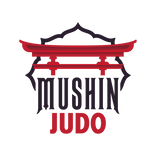At Mushin Judo we focus on developing the character traits of humility, respect, perseverance, courage, self-control, friendship and honor within the judoka (judo student).
Mushin Judo - Dojo Etiquette
|
DOJO ETIQUETTE
Etiquette is an important part of judo. Judoka are expected to respect their practice partners, opponents, their instructors, coaches, and the referees and officials at tournaments. Our respect for others in judo is expressed through our actions and words. These specific actions are expected of a judoka. The following description of a judoka's expected actions is provided as a guide for the student, parents and spectators to better understand proper judo etiquette. Other dojos may vary in some details. |
ON THE MAT
We bow before entering the practice mat. If we must come in late we bow to the head instructor and wait at the edge of the mat for the instructor to invite us to participate. At the beginning of class we stand in line facing the instructors. We stand in order by age category and within each category by rank. The age categories in judo are Yonen (12 years and under), Shonen (13 to 16 years) and Seinen (17 years and above). Higher ranks within each age category stand on the left with lower ranks to the right. |
|
DURING CLASS
When beginning practice with a partner we humbly request the honor of practicing with them “onegai shimasu.” After finishing with this partner we thank them “domo arigato.” No gum, food or beverages without lids are permitted on or around the mat. There are two acceptable ways to sit in class. The first is sitting on the knees (seiza). The second is sitting cross-legged. These methods of sitting will be demonstrated in the beginners class. Always walk around or behind the instructors and classmates during class. Make sure that your fingernails and toenails are trimmed and filed so as not to cut or injure your opponent. Good hygiene is an essential part of good judo etiquette. Make sure your gi (uniform) is clean and the player is clean also. |
ENDING CLASS
At the conclusion of class we will line up again. The class will be called to attention “kiotsuke” followed by “mokuso”. “Mokuso” is the command to close your eyes and begin a form of meditation breathing intended to lower the heart rate. It is performed by breathing in for a count of seven through the nose, holding the breath for a count of seven and then slowly breathing out through the mouth. At the conclusion the sensei announces “yame” to end the breathing. This is followed by a command to bow “rei”. The command “jyozan-ni-mukate” means to face the place of honor (“joseki”). Once again we bow at the command “rei.” We turn again to face the instructors and conclude the class by bowing as we thank the instructors by saying “domo arigato.” |
ABOUT BOWING
In the Japanese culture bowing is routinely performed as a sign of greeting and respect. In judo we perform two types of bows, standing and kneeling. Bowing is done when entering the dojo, entering or leaving the mat, at the beginning and end of class, before and after practicing with a partner and at tournaments at the beginning and end of each match. At the end of the class we turn and face joseki, the “higher end” of the dojo and bow towards the picture of Professor Kano. This bow is a sign of our respect for the founder of judo. In tournament we bow before we enter the contest area, we bow once more at the line then step forward and the contest begins. At the end of the contest, we step back to the white line, bow to our opponent again and bow a final time as we exit the contest area. |
VISITING OTHER DOJOS
Etiquette is especially important when visiting other dojos. Always ask your Sensei’s permission before visiting another dojo. Visit only when Mushin Judo is not practicing. When Mushin Judo is practicing you are expected to attend our practices. When visiting other dojos please remember that you are a guest representing Mushin Judo. The following rules should be observed when visiting:
1. Be on time
2. Ask the head instructor of the dojo you are visiting for permission to participate
3. Ask about and pay any required visitors fee
4. Greet all Senseis on the mat and have a humble attitude – you are there to learn
5. Work hard
6. Remember you are representing Mushin Judo when you visit, be respectful
7. Thank the head instructor and any other instructors after class has ended
Etiquette is especially important when visiting other dojos. Always ask your Sensei’s permission before visiting another dojo. Visit only when Mushin Judo is not practicing. When Mushin Judo is practicing you are expected to attend our practices. When visiting other dojos please remember that you are a guest representing Mushin Judo. The following rules should be observed when visiting:
1. Be on time
2. Ask the head instructor of the dojo you are visiting for permission to participate
3. Ask about and pay any required visitors fee
4. Greet all Senseis on the mat and have a humble attitude – you are there to learn
5. Work hard
6. Remember you are representing Mushin Judo when you visit, be respectful
7. Thank the head instructor and any other instructors after class has ended


